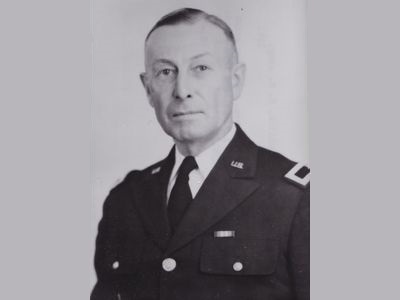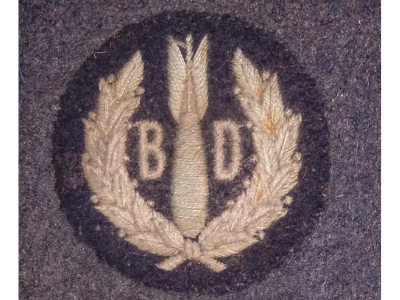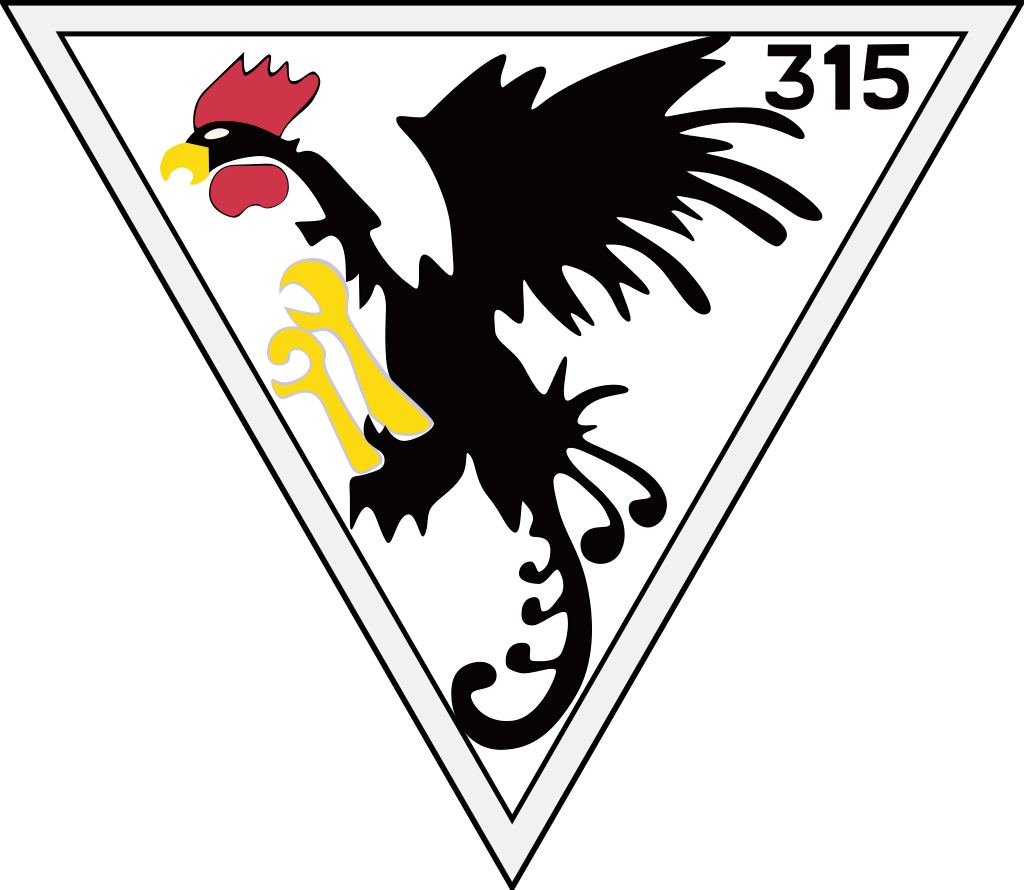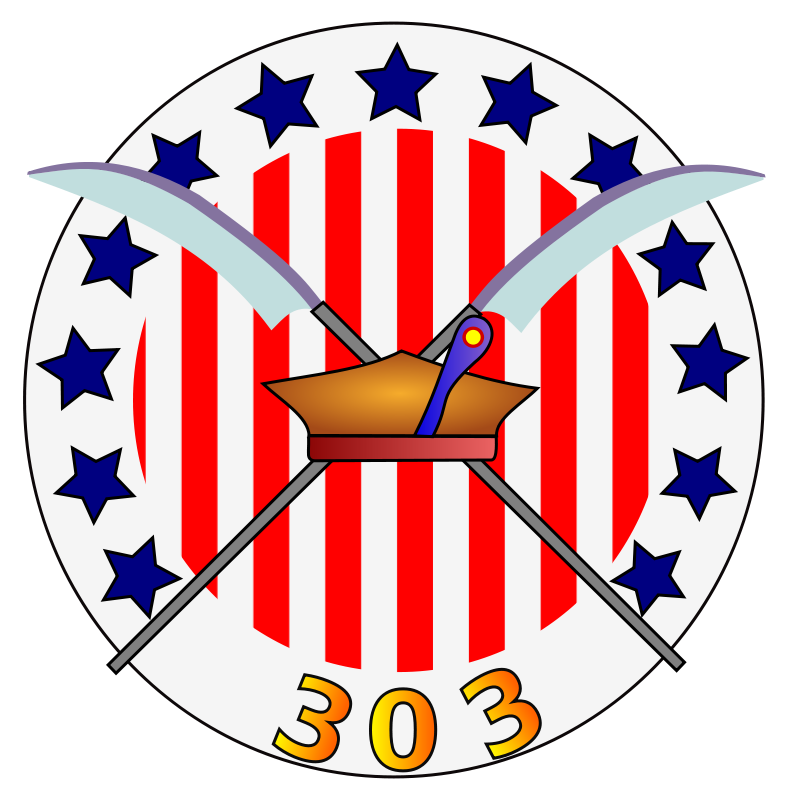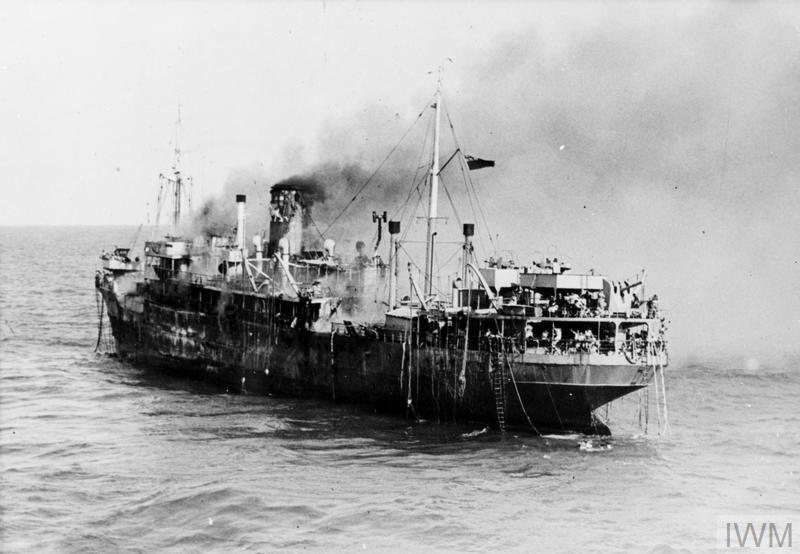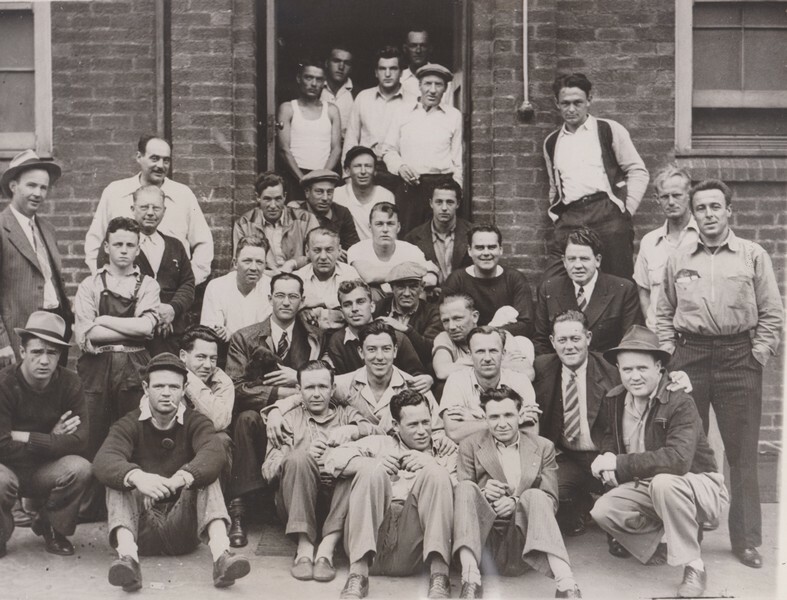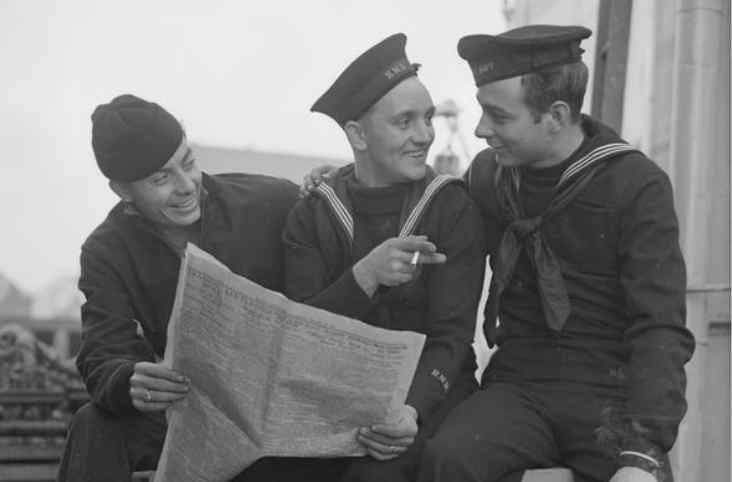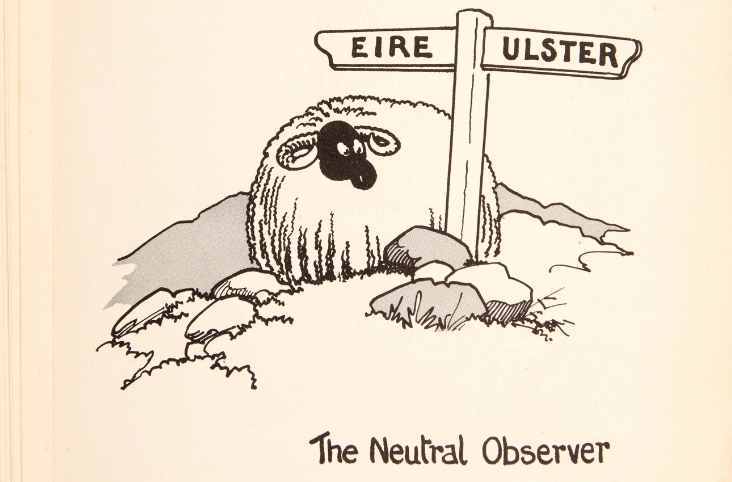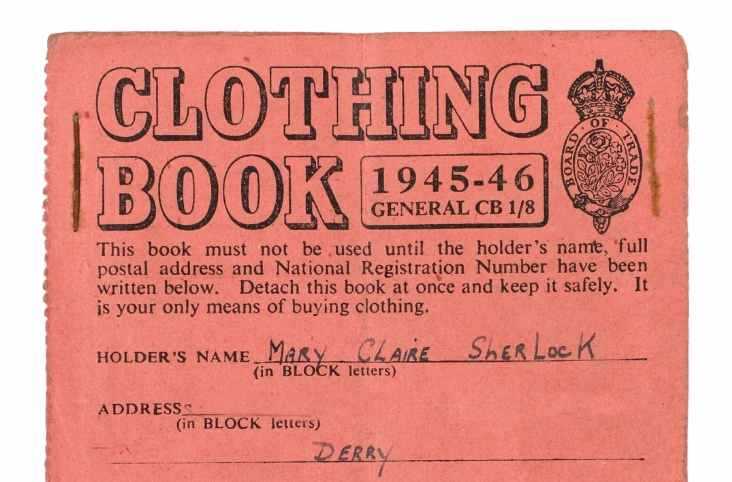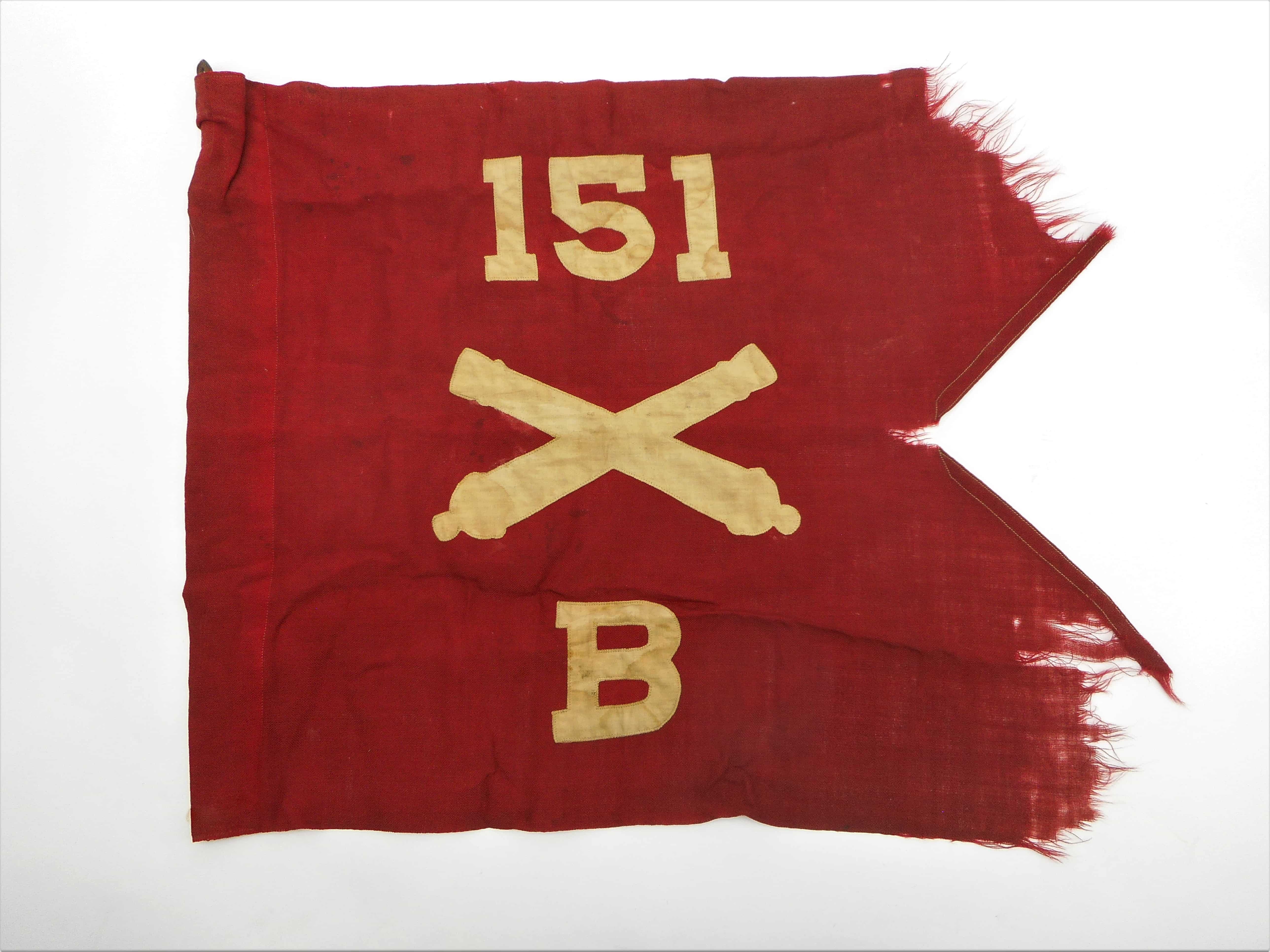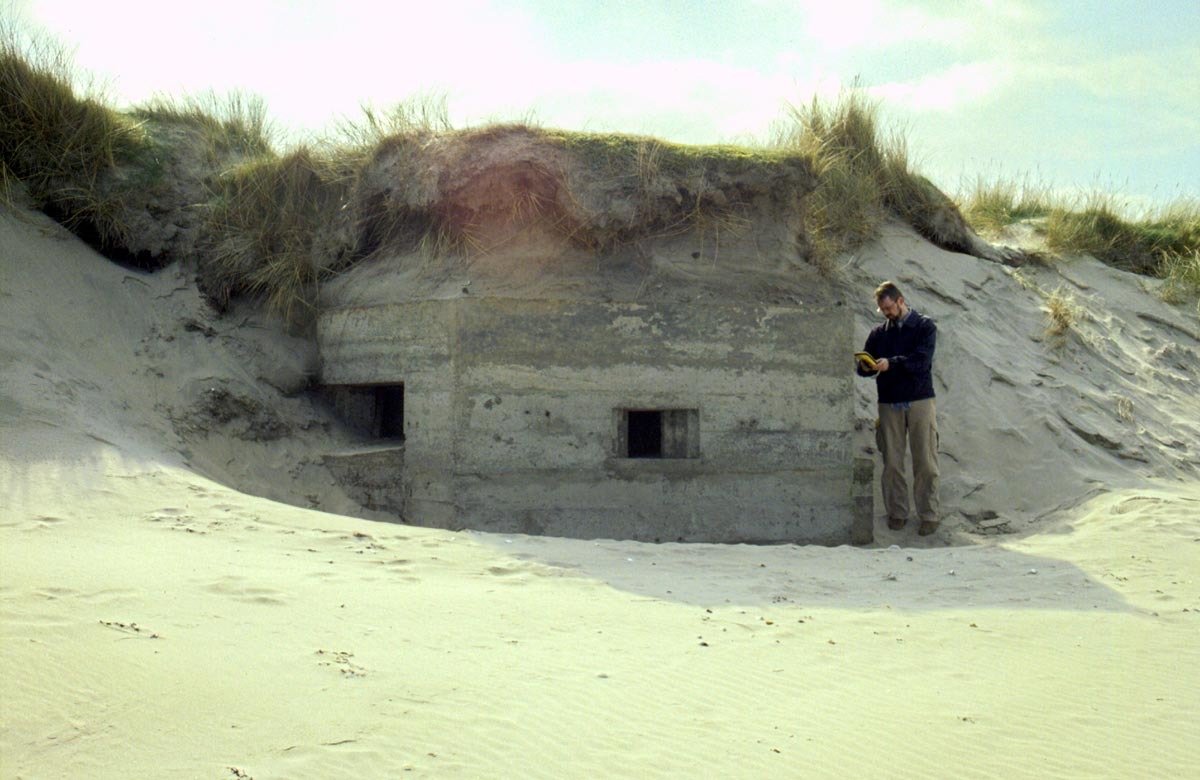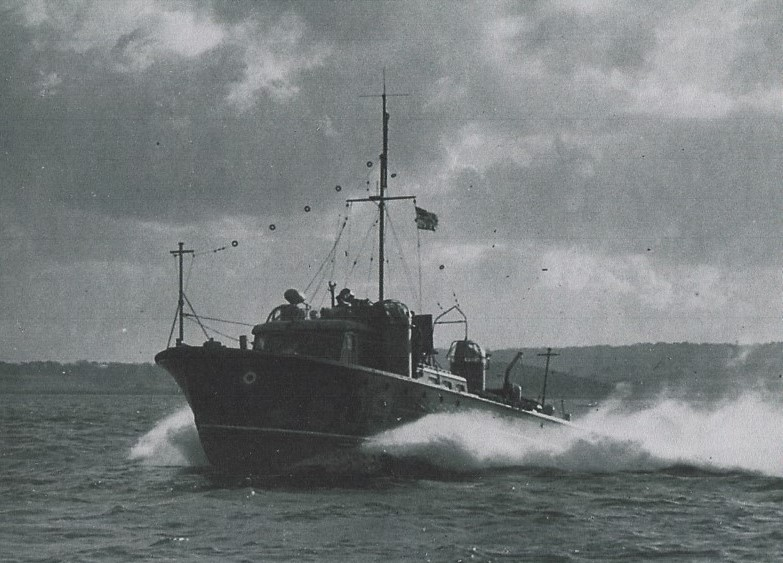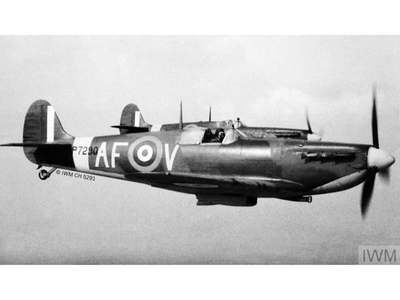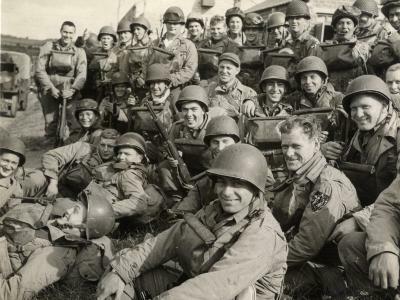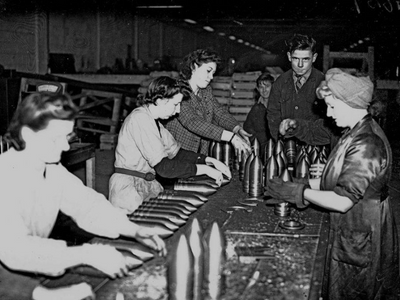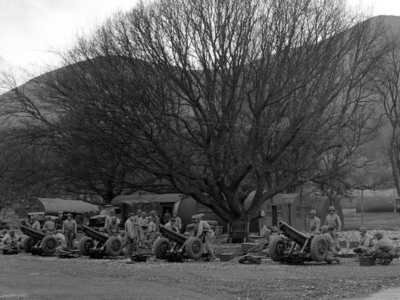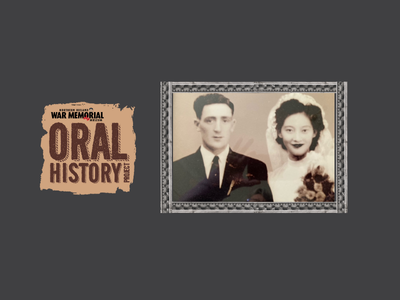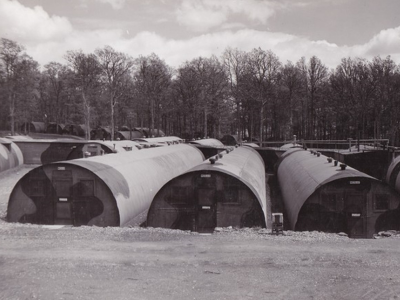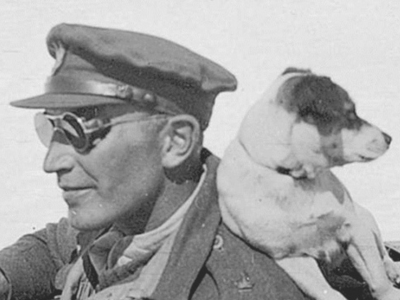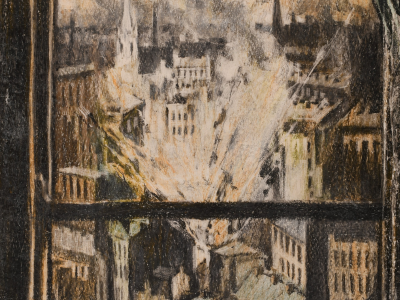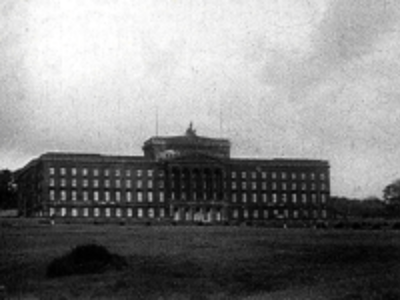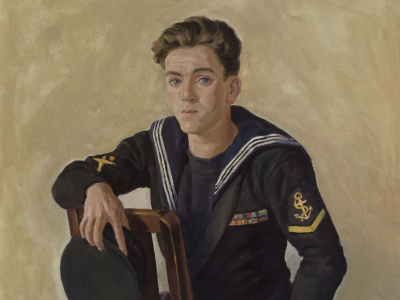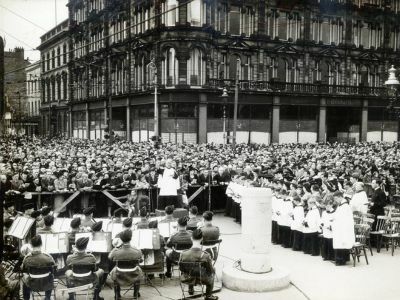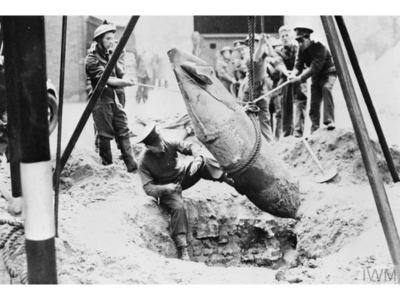Blog
Still Over Here Part 2: The archaeology of the United States military in Northern Ireland, 1941-45 - The United States Army Airforce
In our last blog post, we examined the archaeology left behind by the US Army and Navy during the Second World War. However, the largest remaining sites are the airfields used by the United States Army Airforce (USAAF). Plans were made in 1941 to provide training sites for USAAF unites in Northern Ireland, and the Eighth Air Force Composite Command was established to oversee all US air operations in the region. Thirteen airfields were used to some extent by US aircraft, but six were dedicated to US use. Airfield construction in Northern Ireland had accelerated, as sixteen new airfields (three already existed before the war) and three flying boat bases were constructed from 1939-1943. The USAAF was allocated Langford Lodge, Maghaberry and Mullaghmore, Co. Antrim; Toome, Co. Londonderry; Greencastle, Co. Down and Cluntoe, Co. Tyrone.
Langford Lodge became one of the largest USAAF depots in the United Kingdom. Sitting on the southeastern shore of Lough Neagh, the Lockheed Overseas Corporation and USAAF used the airfield to prepare aircraft for delivery to operational units. Technicians and mechanics repaired battle-damaged aircraft and restored and rebuilt aircraft engines. In the 18 months between November 1942 and April 1944, some 3,800 aircraft were assembled, modified, and repaired, while another 11,000 were serviced. Servicing and repair operations ended in August 1944, but the airfield was used for aircraft storage. The site continued in use by subsidiaries of the Martin-Baker Company, and the runways survive in good condition. The control tower, with its angled windows to reduce reflections, is a listed building. While many buildings have been demolished, structures remain, such as two aircraft assembly buildings, the engine maintenance shop and the main machine shop, which is also listed.
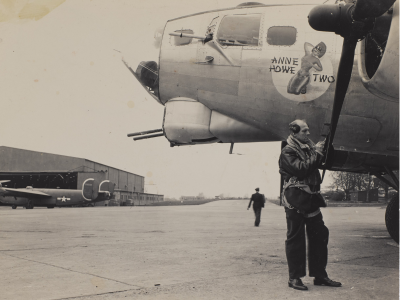
The priority for USAAF units in Northern Ireland was training. The other five airfields became Combat Crew Replacement Centres under the control of Eighth Air Force Composite Command. Crews arriving from the US needed experience flying in European weather and vital training in gunnery, bombing, radio, and navigation. Therefore, under the instruction of veteran pilots and aircrew, crews trained on the aircraft they would be assigned to in combat.
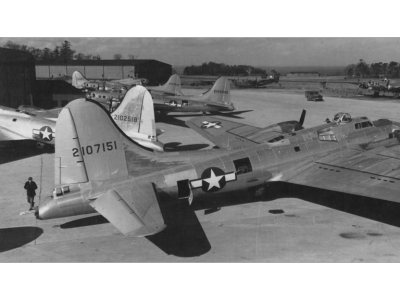
Cluntoe, known as Army Air Force (AAF) Station 238, was transferred to US control in August 1943. This was where B-17 Flying Fortress and later B-24 Liberator crews were trained before being sent to their operational units. Ten miles to the north, US aircrew trained at RAF Toome, known as AAF Station 236. Toome had similar facilities but trained crews on A-20 Havoc and B-26 Marauders. Landowners keen to restore the land to agricultural use removed many buildings on both airfields after the war. Modern industrial development has taken a severe toll on the fabric of Toome. However, some distinctive elements remain. Sections of runways, perimeter taxiways and aircraft dispersal platforms remain, as do the fusing sheds where bombs were armed before loading onto aircraft. The eponymous control tower, familiar to airfields across the UK, survives in good condition at Cluntoe, as does the operations room. However, the owner has repurposed the latter as an animal byre.
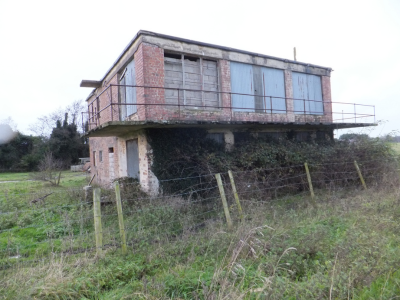
One building identifying this as a uniquely US base was the Norden Bombsight vault. The iron bars on the windows betray its function as a secure storage site. The Norden Bombsight used an analogue computer to calculate bomb impact based on prevailing fight conditions, airspeed and direction and incorporated an autopilot to control the plane during the bomb run. The bombsight was subject to the utmost secrecy. Consequently, when not fitted to an aircraft, they were stored in a vault within the secure store. The building was also climate controlled to preserve the delicate mechanics and optics of the bombsights, and the remains of the ventilation systems remain at both vaults.
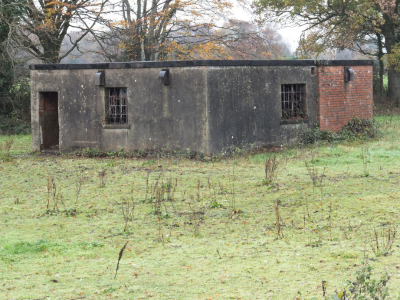
Both airfields had gunnery and crew procedures centres, known by aircrew as 'GROPE', which was used to train aircrew on the ground by simulating the conditions of actual operations using mock-up fuselages. This was referred to as synthetic training (what we would refer to as simulators), and a series of synthetic trainers remain at AAF Station 240 at Mullaghmore which was home to the 6th Replacement and Training Squadron (Bombardment) from November 1943 until February 1944, when the station was used for short-term aircraft storage, reverting to RAF control in May 1944. It has all the familiar buildings, such as the control tower, cannon butts and parachute store, but there remains a collection of synthetic trainers used by US and British aircrews. The Air Ministry Laboratory (AML) Bombing Teacher used projected maps and dummy bombsights to instruct cooperation between bombardiers and pilots. The Link Trainer was a mock-up of a small single-engine plane mounted on bellows to simulate flight movements and was used to teach instrument flying safely. In Mullaghmore's case, the Turret Fun Sighting Trainer, a double with tow bays, was used to instruct aerial gunners on leading fast-moving aerial targets. Images or silhouettes of German aircraft were projected on the screen, and a trainee in a mock-up turret would 'Fire' the guns with realistic sound and ammunition tracking.
The largest airfield used by the US was at Greencastle Co. Down. The USAAF took command of the airfield at the start of August 1943, when it was designated AAF Station 237. It specialised in training gunners for B-24 Liberators but was also a satellite depot for Langford Lodge. However, after D-Day on 6 June 1944, the site was steadily run down, with training ending by September. The airfield became a storage depot for surplus and war-weary aircraft; at one point, 320 were parked on its many hard standings.
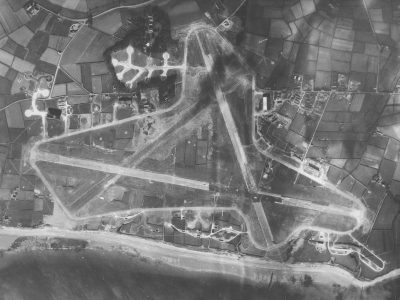
The control tower, operations room, and an exceptionally well-preserved instructional site remain (with three AML Bombing Teachers, Link Trainer, and a Gunnery and Crew Procedure Centre), but the airfield has lost most of its runways, dispersals, and taxiways. Only sections of the 'snowflake' hard standings remain to the west, providing solid foundations for static caravans. Most of the runways and perimeter tracks were torn up to restore the land to agricultural use, but the rubble was reused to make field boundary walls throughout the area. A surprising find among the walling was evidence of gunnery training, a concrete firing stand used to mount an M2 0.5-inch machine gun.
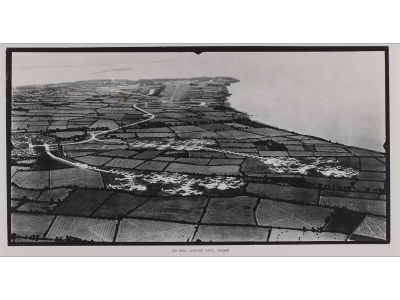
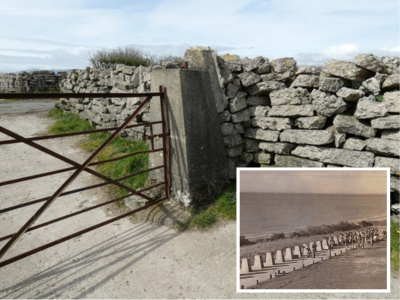
The events that transformed rural districts into military activity hubs have long since passed into history. Each year, fewer people remain with first-hand knowledge and memories of the influx of US service personnel into Northern Ireland during 1941-45. History and archaeology will become the sole means to connect the present to the wartime years when the most significant endeavor of construction and engineering in Irish history transformed the landscape across all six counties. However, the post-war years have slowly eroded the fabric of the wartime facilities, as runways returned to fields and steel aircraft hangars torn down for scrap. The remains are becoming ever-more ephemeral, but with an educated eye (sturdy footwear and landowner's permission), it is still possible to find traces of the US Navy, Army Air Force, and Marine scattered throughout the landscape.
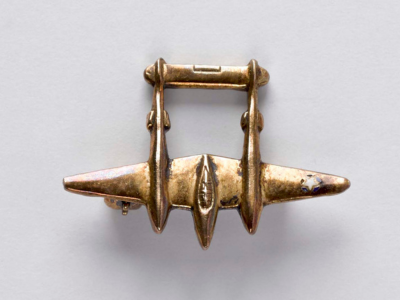
If you missed it, you can read part one of this blog series here: Still Over Here Part 1: The Archaeology of the United States Military in Northern Ireland, 1941-45.
